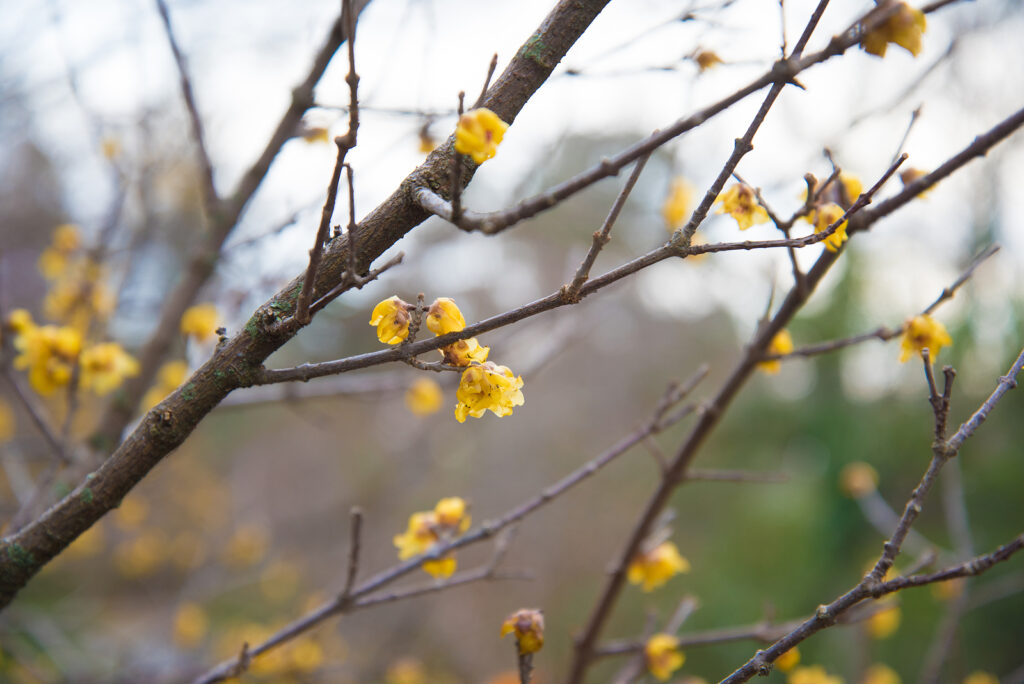Chimonanthus–commonly called wintersweet–is a mid-size deciduous shrub that blooms in late winter and early spring. Its small sulfur yellow flowers are very fragrant and are borne on bare branches. Lance-shaped, glossy, mid-green leaves emerge after the plant flowers.
Chimonanthus can be grown as a late winter specimen plant; set it in front of evergreens for the best display of color. It can be grown in a shrub border or against a sunny wall. Plant Chimonanthus along a walk where the fragrant flowers can be enjoyed.
Chimonanthus grows to 12 feet (4m) tall and 10 feet (3m) wide. It can be planted in full sun or partial shade. It can tolerate wet soil but is best grown in a well-drained loamy soil.
Chimonanthus is a genus of 6 species of shrubs native to woodlands in China.
Get to know Chimonanthus
- Plant type: Deciduous shrub
- Growing zones and range: Zones 7-9
- Hardiness: Hardy to Zone 7
- Height and width: 12 feet (4m) tall and 10 feet (3m) wide
- Foliage: Lance-shape, glossy, mid green leaves to 8 inches long
- Flowers: Pendent, many-petaled, open bowl-shaped, waxy, and very fragrant flower
- Flower color: Sulfur yellow
- Bloom time: Late winter, early spring
- Uses: Shrub border, specimen
- Common name: Wintersweet
- Botanical name: Chimonanthus
- Family name: Calycanthaceae
- Origin: Woodland in China

Where to plant Chimonanthus
- Plant Chimonanthus in full sun or partial shade.
- Grow Chimonanthus in loamy, well-drained soil.
When to plant Chimonanthus
- Set container-grown Chimonanthus in the garden in after bloom time or in autumn.
Planting and spacing Chimonanthus
- Space Chimonanthus 10 feet (3m) apart.
How to water and feed Chimonanthus
- Chimonanthus grows best in soil that is evenly moist.
- Fertilize Chimonanthus with an all-purpose fertilizer in summer.
Chimonanthus care
- Prune off old branches after flowering. Hard pruning will keep Chimonanthus from becoming leggy.
Chimonanthus pests and diseases
- Chimonanthus is infrequently bothered by pests and disease.
Chimonanthus propagation
- Sow seeds in a cold frame as soon as ripe, late spring
- Root Chimonanthus softwodd cutting in summer.
Chimonanthus varieties to grow
- Chimonanthus praecox, wintersweet. Broadly upright, deciduous shrub; bears pendent, fragrant, sulfur-yellow flowers 1-inch across, stained browns or purple inside, borne on bare shoots in winter; grows 12 feet tall and 10 feet wide.



